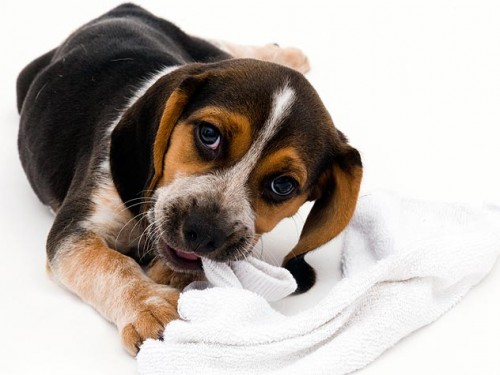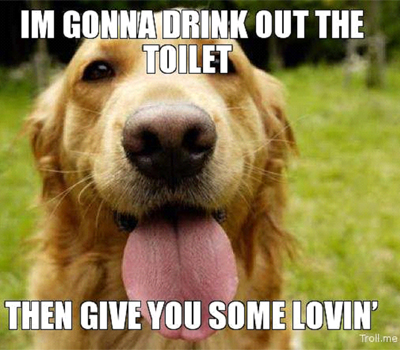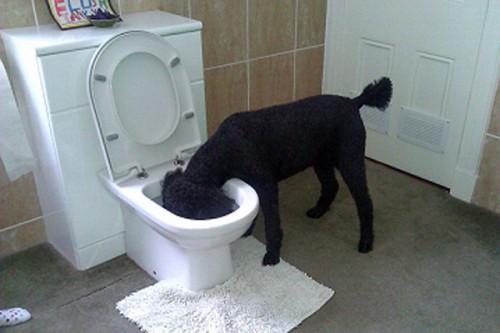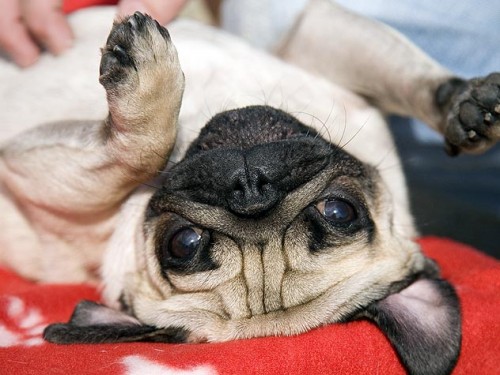Verbal Commands for Assisting in Dog Training
Sit, Stay, Come, Down
Before attempting to teach your dog a new verbal command, get his full and undivided attention. Distractions in the area can make it too tempting to pay attention to something else. Start with simple, basic commands such as sit and stay. Use positive rewards such as a small treat — and of course, praise. Tell your dog what a good boy he is and use your tone of voice to exclaim it. Express praise and reward your dog with a treat at the very moment she sits.
How Long Do Puppies Chew?
The following is an excerpt from Petfinder’s FurKeeps Kickoff Live Facebook Q&A.
Q: My 2 1/2-year-old Greyhound tries to eat things like napkins, Kleenex, etc. She also chews on baskets and some of the kids’ toys.
Is this still puppy behavior? How can I stop it?
A: Your Greyhound is too old to be teething, so chewing is just something she finds rewarding. Some dogs are “hard chewers” all their lives — think Pit Bulls and Labs. You don’t see it as much in Greyhounds, but that just goes to show that each dog is an individual.

You can also try taste-aversives on things like the baskets. Use bitter apple furniture cream on wood or wicker and the pump spray on fabric. There are other brands on the market as well if you find she likes the taste of rubbing alcohol and crabapple juice.
Gross! My Dog Drinks from the Toilet!
You hear that familiar slurp-slurp-slurp of your dog drinking water … except it’s not coming from the direction of your dog’s water bowl. Instinctively, you head toward the bathroom, peek inside and yes, that’s right: there is your dog happily lapping up water from the toilet like you purposely left it open for him as a treat.
Sigh. Life with dogs.
Sure, drinking from the toilet is kind of amusing. (I mean, come on! He’s drinking from the toilet!) And yes, it’s really disgusting. (I mean, come on. He’s drinking from the toilet.) So why do dogs do this peculiar behavior?

Why Do Dogs Drink from the Toilet?
Two words: fresh water. Ignore, for a moment, the pesky detail that this supposedly “fresh” water is coming from a place where humans — well, you know. To your dog, a toilet is a convenient place where fresh, cool water is abundant and readily available. That bowl of water you just put out for your dog? Stagnant and old, according to your dog. When you think about it, it’s actually kind of smart to choose the seemingly fresher choice in the large porcelain bowl over the one in the small bowl that’s been sitting there who knows how long.
Another reason a dog might drink from the toilet: He finished the water in his water bowl, he’s still thirsty, and he’s in search of another source of water. Thirsty dog, meet toilet bowl.
Just How Bad is Toilet-drinking, Anyway?
According to the ASPCA Animal Poison Control Center website, “bacterial-related gastrointestinal problems could occur from drinking stagnant toilet water, so it is a good idea to discourage your dog from imbibing from the commode.” Toilet water could also be filled with household-cleaner chemicals and other junk you don’t want your dog drinking, especially if you just cleaned the toilet, or if you use drop-in toilet bowl cleaning tablets.

Craig Murphy/Flickr
Thankfully, if your dog drinks from a toilet that contains drop-in cleaners, it’s not likely to be a problem beyond stomach upset, assuming that you followed the cleaner label’s directions, according to the APCC. If your dog is showing signs of serious illness, contact your local veterinarian or call the APCC hotline at 888-426-4435.
How Can I Stop This Gross Behavior?
You don’t have to put up with potty drinking for long — you just have to modify your behavior first.
1. Leave the toilet lid down. This is one of those duh things that some people don’t do because it’s just so easy to forget. If the toilet water is inaccessible, then your dog can’t drink it. Of course, there are always those crafty canines that somehow manage to lift up the toilet lid anyway, which brings us to No. 2 on the list.
2. Close the bathroom door. If leaving the toilet lid down doesn’t deter your dog from drinking from the toilet, then close the bathroom door. This gives you the added bonus of keeping your dog out of the bathroom altogether and away from potentially poisonous or harmful chemicals, medicines and toiletries.
3. Keep your dog’s water bowl filled. Make sure your dog always has easy access to fresh, clean water. A dog who turns up his nose at water that has been sitting stagnant for days (or even hours) will probably go in search of a fresher alternative (read: the toilet). Also, a dog who is a big drinker might finish his water before his thirst is quenched, so be on the lookout for an empty water bowl, and fill it accordingly.
4. Try a gadget or gizmo. If all else fails and your dog still craves a taste of the toilet, there are products available that might help, including automatic water bowls and fountains that keep the water circulating and fresh. You could also try installing a toilet-seat lid locks, which will let you easily use the toilet but fasten shut when not in use.
How To Clean a Dog’s Ears
Even though we give them lots of good scratches, when it comes to grooming, the ears of dogs are frequently the most neglected parts of their bodies. But their ears are also one of the most important areas to attend to. Ear infections can be serious, and can begin easily if an animal’s ears are not kept clean. After all, how will Biffer know when to start salivating if his ears don’t pick up the sound of kibble hitting his bowl? Make sure your furry guests keep their ears perked up by following these simple steps.

Be careful! If the dog’s ears have an offensive odor, or if he has been scratching them repeatedly, you should not remove the icky stuff that might have accumulated; whatever’s there can help your vet determine the cause of the “ear-itation” and figure out how to treat it. So if he’s scratching, or if you’re tempted to plug your nose while cleaning his ears, you should turn the task over to your veterinarian or veterinary technician first; she can take swabs of the substance for examination.
2. Ear We Are
Before you start your scrubbing, make sure you’ve set the table. You should have your supplies set out and ready to go. Put out your cotton balls and cleanera commercially prepared ear cleaner with a low alcohol content is best. Wash your hands thoroughly so you don’t introduce any infectious particles to the dog’s ears. You may want to work with a buddy; your friend can provide distracting pats while the ear cleaning takes place.
3. Wipe Out!
Once you’ve determined that your dog’s ears are merely dirty and not full of mites or infection, you can remove the dirt. Using a cotton ball moistened with mineral oil, gently wipe out the inner surface of the animal’s earflap. Discard the first cotton ball and moisten another; with this one, clean out the part of the ear canal that you can see. Stop when you feel resistance-don’t try to stick the cotton ball any farther into the ear than it should go. Repeat this process on the other ear. Make sure you remove any foreign matter, whether it’s dirt, bugs, or just waxy buildup.
4. Ears to You!
Give your furry friend a pat, give your helper a high-five, and send your little buddy on his way. Now he’ll be well-prepared to hear those wonderful words:
“Look, honey, he’s beautiful! He’d be a wonderful new member of our family.”
“Oh, you’re right. And his ears are so clean!”
Dog Breeds Originating From Scotland
Herding Dogs
The bearded collie, as far back as 1600s, was bred for hill shepherding. His elegant, long coat provided protection against harsh weather, like that of of the rough collie or Lassie dog. A miniature Lassie lookalike is the Shetland sheepdog. The iconic herding dog, the intelligent and energetic border collie, originated in the wild Scottish/English border country.
Sporting Dogs
Another old breed from Scotland is the rough-coated border terrier. The West Highland white terrier was bred to be visible in the heather on shoots. The cairn terrier was named after the stone cairns across Scotland. Three U.S. presidents have owned Scottish terriers, affectionately known by enthusiasts as Scotties. Other sporting breeds from Scotland include the golden retriever, bred as a gun dog to retrieve duck and upland game, the Gordon setter and the Scottish deerhound, the hunting dog of the Scottish Chieftains.
Chewing and Destruction

Let’s first look at why dogs chew. Puppies have sharp little “milk teeth” and not only do puppies enjoy chewing as a means to relieve stress but they need to chew to alleviate aching gums and later to loosen those teeth when it is time to fall out. Some puppies can teethe until they are 9 to 12 months although many will be finished and have a complete set of adult teeth by this time.
Older dogs should have acceptable chew objects to keep those teeth healthy. Certainly not all chew toys are created equal so ask your veterinarian for recommendations for safe and effective chew objects. When adult dogs chew on appropriate items it can be like us flossing. It cleans excessive plaque off the teeth and feels pretty good. They were given strong jaws and teeth to chew through bones. Nature would have these opportunistic scavengers getting nutrition wherever they could find it. So bones have a lot of value to them. It is important to give bones that are suitable for dogs. Consult your veterinarian for ideas on using bones to make sure they are appropriate size and type for your dog. You should never give cooked fowl bones to dogs because of the high risk of choking and splintering.
We now know not only do dogs enjoy chewing but they need to for a number of different reasons. Outside of the desire to chew, dogs explore the world through scent and by using their mouths. We pick up objects, eat and play by using our hands. Dogs use their mouth for all three of these activities. When you bring a new dog into your home whether it is a puppy or adult you should follow a few key steps to make sure they don’t chew on the wrong things.
STEP 1: PROOFING YOUR HOME.
Make sure anything that is valuable or dangerous is put away when you bring a dog home (shoes, electric cords, toxic plants, dish towels, etc). Get down on the ground and look for anything hanging down that looks like it would be fun for a dog to play with or chew.
STEP 2: FIND TOYS.
Find objects that the dog likes to chew on (toys,appropriate sized bones that do not splinter, puzzle and feeder toys) and praise your dog every time he chooses the correct objects to put in his mouth.
STEP 3: EXERCISE.
Alleviate a bored dog and anxious mind by giving your dog a big exercise outlet prior to down time, preferably one where he can use his mouth in a positive way like fetch and structured tug games.
STEP 4: DROP IT.
Teach your dog a solid “drop it” command so when he picks the wrong object he is happy to let it go for another object or treat.
After a few weeks the dog will develop a routine of the objects he likes to put in his mouth. Keep mixing up the routine by adding objects and hide old favorites from time to time so when you bring it back he thinks, “oh yeah, I forgot about that one, I love that”. The best defense against chewing and destruction is a good offensive game plan. Show your dog what kinds of objects are acceptable to chew and you will prevent a lot of destruction and unnecessary frustration.
Do Warts & Moles Affect a Dog’s Health?
Wart Risks
Warts are passed from dog-to-dog when an uninfected dog comes in contact with an infected dog or catches the virus in the infected dog’s environment. Warts, or viral papillomas, usually are harmless with little to no impact on a dog’s health. If your dog has a large number of oral papillomas, eating and drinking can cause significant pain and lead to malnourishment. There are only two published cases where warts have developed into cancer, according to Veterinary Partner. Oral papillomas have an increased risk of infection due to bacteria of the mouth.
Changing Moles
Moles are caused by an uncontrollable development of cells. As with human moles, most moles on dogs are harmless. Cancerous moles often have irregular borders and occasionally bleed, but even benign moles can look suspicious. Some moles have a cauliflower appearance that resembles warts, but actually are skin carcinomas. Melanoma typically develops from an older mole, so it’s important to observe moles for changes on a regular basis.
Handling Warts
Viral papillomas cannot be transferred to humans, so it’s unnecessary to isolate the dog from your family, but do keep the dog separate from uninfected dogs. Warts are most common in young dogs with immature immune systems. The warts usually disappear without treatment as the immune system matures. If the warts resist the immune system, the warts can be removed surgically or frozen. A bacterial infection secondary to oral papillomas usually is treated with a course of antibiotics.
Managing Suspicious Moles
A vet will observe a skin lesion that is changing shape, changing colors or growing larger. The mole is removed through a biopsy and tested by the veterinarian to determine if the mole is cancerous. If cancer is diagnosed, the cancer will be typed and staged to help the veterinarian choose an appropriate path for treatment. In most cases, the cancer is removed, but if organs are involved, chemotherapy is recommended without surgery. Prolonged sun exposure increases your dog’s risk for skin cancer, so be sure there are shaded areas in your dog’s outdoor environment. Although warts turning into cancer is extremely rare, prompt treatment of warts can reduce your dog’s risk for skin cancer.





